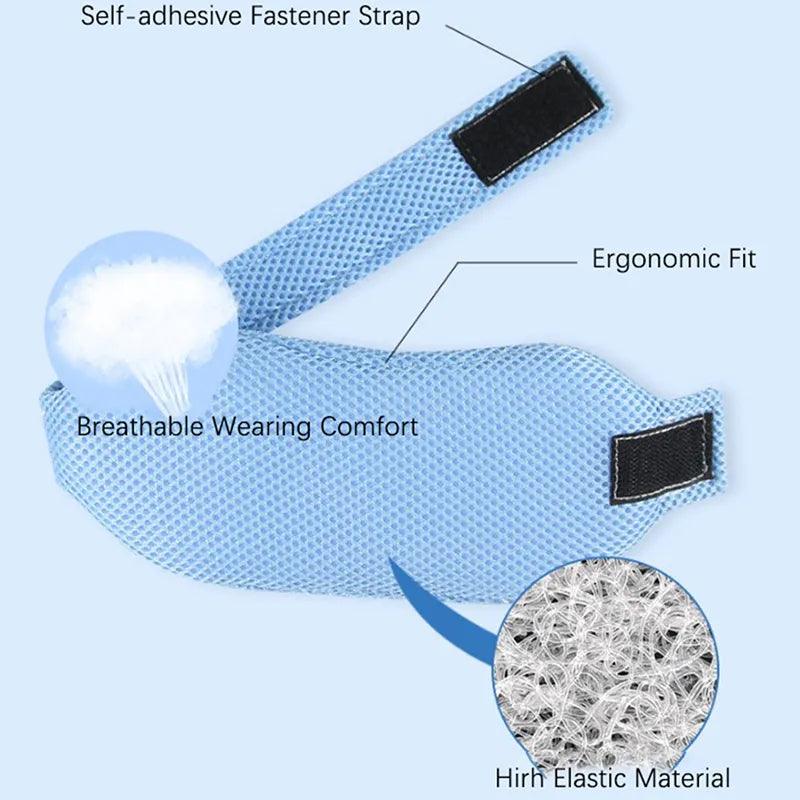Introduction
CPAP therapy has changed millions of lives by providing relief for obstructive sleep apnea. But there’s one common challenge many CPAP users face: mouth leaks. If you’re waking up with a dry mouth, headaches, or noisy mask issues, your solution might be as simple as a chin strap.
Let’s explore how an anti-snore chin strap for CPAP users can improve your therapy, boost your sleep quality, and make your mask feel more comfortable—night after night.
1. What’s a CPAP Chin Strap?
A CPAP chin strap is a soft, elastic band worn under your chin and around your head. It’s designed to:
-
Keep your mouth closed while you sleep
-
Prevent air leakage from your CPAP machine
-
Encourage nasal breathing for better oxygen absorption
For mouth breathers using a nasal mask or pillow, it’s a game-changer.
2. Why Mouth Leaks Are a Problem
When your mouth opens during CPAP use:
-
The pressurized air escapes
-
The mask becomes noisy
-
You might snore or gasp anyway
-
Therapy becomes less effective
Mouth breathing also leads to dry mouth, sore throats, and poor sleep quality.
3. Who Should Use a Chin Strap with CPAP?
If you’re using a nasal CPAP mask and experiencing:
-
Dryness or discomfort
-
Air leaks
-
Frequent awakenings
-
Poor sleep data (AHI still high)
…then you’ll likely benefit from a chin strap sleep apnea aid.
4. Real Benefits of Pairing a Chin Strap with CPAP
✅ Seals the mouth—better airflow control
✅ Reduces noise from leaks
✅ Promotes deep sleep
✅ Improves CPAP compliance
✅ Increases mask comfort
You may even get better results using a nasal mask with chin strap than a bulky full-face setup.
5. Choosing the Right Strap for CPAP Compatibility
Look for features like:
-
Lightweight design that fits under a headgear
-
Non-slip material that stays put overnight
-
Adjustable sizing for a snug but breathable fit
Avoid bulky or rigid straps that interfere with your mask harness.
6. How to Wear It With a CPAP Mask
-
Put on your chin strap first, securing it around your head and under your jaw.
-
Then attach your CPAP mask as usual.
-
Test for leaks by exhaling with your mouth closed—if air escapes, re-adjust.
Tip: Use mirror positioning the first few times.
7. Do Chin Straps Really Help with Sleep Apnea?
They won’t cure sleep apnea, but for many, chin straps:
-
Reduce AHI (apnea-hypopnea index) by improving therapy effectiveness
-
Help avoid full-face masks, which some find uncomfortable
-
Support tongue posture and airway openness
You’ll breathe more quietly and efficiently—often from the first night.
8. What Do CPAP Users Say?
“I was ready to quit CPAP. This little strap made everything work properly.”
“With the chin strap, I don’t wake up gasping or with dry mouth anymore. Total game changer.”
9. Can It Replace a Mask?
No—chin straps are supportive, not substitutes. They’re not meant to treat sleep apnea alone but work beautifully with CPAP, nasal devices, and other treatments.
10. Maintenance & Comfort Tips
-
Wash the strap weekly to prevent odor buildup
-
Use a satin pillowcase to reduce friction
-
Replace every 3–6 months for elasticity retention
Final Thoughts
If your CPAP therapy feels incomplete or uncomfortable, a chin strap could be the missing piece. It’s affordable, easy to wear, and often the difference between “barely tolerable” and “deep, restful sleep.”
Level up your CPAP comfort. Add our anti-snore chin strap to your setup today—and finally get the sleep you’ve been working for.

